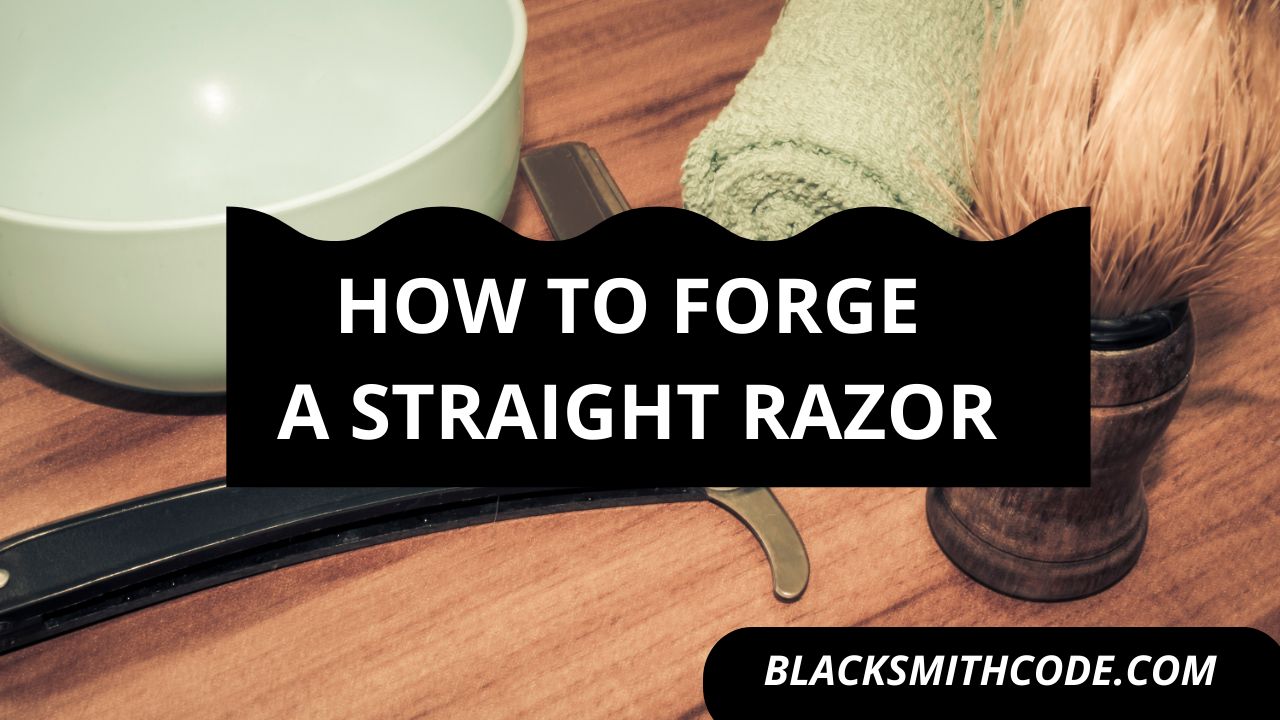Have you ever forged an anvil or any part of an anvil before? Forging an anvil or any of its parts might be more fun than you can imagine and this in turn takes you a step further in becoming more skilled as a blacksmith. Let’s proceed to learn how to forge a hardy hole cut off tool, which is an essential part of an anvil.
The hardy is a part of the anvil used as a chisel to cut metals. Unlike the chisel, it is useful in cutting hot metals instead of cold metals. A hardy features a square shank that prevents it from rotating when placed at the anvil’s hardy hole.
The hardy is a very solid metal that needs a lot of know-how before you can forge it. Forging the hardy requires you to follow certain steps and procedures. All of these procedures will surely help you to forge the hardy successfully.
Instructions on How to Forge a Hardy Hole Cut Off Tool
Step 1: Get Your Material
You have to get your material before you start forging. You can use different materials to forge your hardy, but you should make use of your preferred choice. One of the materials you can use is a bolt.
A bolt is a good material because it is similar to a hardy. A bolt has a head and a tail, likewise a hardy. The hardy has a sharpened head for cutting and the tail that goes into the anvil.
Without much ado, let’s start forging.
Step 2: Heat the Bolt
You have to heat the bolt in a forge before you can be able to forge with it. Heating is a sensitive part while forging a hardy hole cut off tool. You should place the bolt in a forge and heat it over a long period. The bolt will be easy to forge with when it becomes hot and malleable.
You should get the bolt from the forge as soon as the bolt becomes red hot.
Step 3: Compress the Bolt
The bolt is too long and thin to fit into the hole, so you have to compress the bolt by beating it with a hammer. Make sure the bolt is hot before you compress it.
Quick Steps
To compress the bolt, you should do the following:
- Place the bolt in the forge and heat it.
- Retrieve the bolt from the forge when the bolt becomes red hot.
- Place the bolt on an anvil and hold it with a crucible.
- Hit the head and the tail of the bolt with a hammer.
- You should also hit the bolt’s sides at intervals to make an even shape for the hardy.
Step 4: Flatten the Head and Tail of the Bolt
After compressing the bolt, flattening should be the next step while forging a hardy hole cut off tool. You should flatten the head of the bolt with a hammer. The head of the bolt should become very flat while the tail of the bolt should take a square shape.
Pro Tip
The square shape should fit into the anvil hole while the head should be flat and large enough not to slip into the hole. You should ensure that the bolt is hot whenever you are forging it. If the bolt becomes cold at any time, you should place it in the forge and heat it again.
Step 5: Grind the Hardy
You should grind the hardy after forging it into its shape. The head of the hardy is the only part that needs grinding. The edge of the head should be sharp to be able to cut hot metals.
Step 6: Reheat the Hardy
After grinding the hardy, you should place the hardy in the forge for reheating. You have to reheat the hardy to a very high temperature. Reheating the hardy helps restructure the material composition of the bolt, making it tougher.
Step 7: Quench the Hot Hardy
You should quench the hardy in a quenching oil after heating it in the forge. You should make sure the metal becomes very hot before removing it from the forge.
After removing the metal from the forge, you should place it in a quench liquid. The quench liquid can either be oil or water. You should allow the hardy to cool in the liquid.
After quenching, clean the hardy and place it in the hole in the anvil. After all these steps, you should know that you have successfully forged a hardy.
FAQs on How to Forge a Hardy Hole Cut Off Tool
Question
Can the hardy cut any type of metal?
You can make use of the hardy to cut through metals. But the use of the hardy is mainly for cutting hot metals. The hardy will cut through any metal as long as it is hot, malleable, and ductile.
Question
What is the difference between a hardy and an anvil?
The anvil houses the hardy. The anvil is a large metal on which blacksmiths place other metals for beating while the hardy is a part of the anvil used for cutting hot metals and other functions.
Question
Can I forge my hardy from aluminum?
The aluminum is a type of metal with characteristics that doesn’t suit the features of an anvil. The material for the hardy should be the same with that of the anvil. Unless you want to have a hardy that breaks frequently, it is not advisable to forge your hardy from aluminum due to its features.
Video on How to Forge a Hardy Hole Cut Off Tool
Warnings
- Make sure you put on safety attires.
- Always put on your goggles to protect your eyes from metallic particles.
- Be careful when handling materials and tools, especially when they are hot.
- You should clean up your tools and machine after working.
- You should beware of a fire outbreak.





